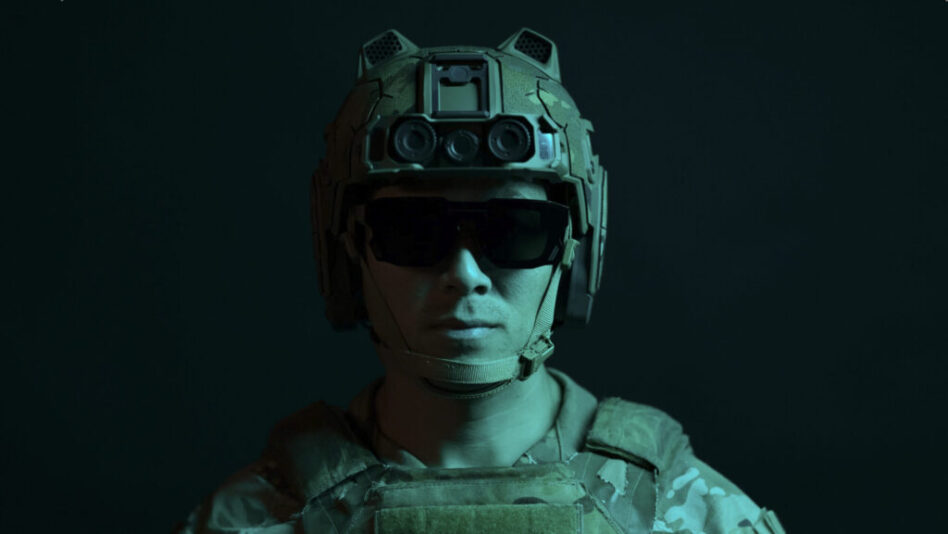Well, Anduril is certainly returning to its VR/AR roots. Yesterday at AUSA, the defense tech giant unveiled a new family of souped-up helmets called EagleEye that “unifies command and control, digital vision, and survivability within a single, adaptive architecture.”
The helmets build on the work Anduril has done for the US Army’s Soldier Borne Mission Command (SBMC) and Soldier Borne Mission Command–Architecture (SBMC-A) programs. The idea, according to the company, is to turn “every warrior into a connected node on the battlefield.”
“We don’t want to give service members a new tool—we’re giving them a new teammate,” Anduril founder Palmer Luckey said in a statement. “The idea of an AI partner embedded in your display has been imagined for decades. EagleEye is the first time it’s real.”
Plus, doesn’t hurt that the full-face version of the helmet makes you look like a Transformer. The future is here, baby.
In case you didn’t know, Anduril and Luckey have quite the storied history with AR/VR—Luckey built the Oculus VR headset in 2012 and sold it to Meta in 2014 for a cool $2B when he was just 21 years old. Pretty impressive, or whatever.
That cash helped him build Anduril which—in a fun little plot twist—took over the Army’s beleaguered Integrated Visual Augmentation System (IVAS) in February of this year—basically VR/AR for soldiers. Full circle moment, indeed.
The Army’s push to get mixed-reality headsets to soldiers has had a bit of a rough time of it:
- The contract for a mixed reality headset for soldiers was originally awarded to Microsoft back in 2021—a sweet 10-year production agreement worth up to $22B.
- Soldiers, well, did not like Microsoft’s headsets. Users reported nausea, dizziness, and performed significantly worse on ranges. Less than ideal.
- Anduril stepped in to save the day in February, officially taking over the contract from Microsoft in April. They announced that they’d team up with Meta to build the headsets in May (full circle!)
The whole program has undergone a bit of a transformation: the push for headsets-slash-helmets is now officially known as SBMC, and the whole data and AI architecture it’s built on as SBMC-A. Anduril has scored major roles in each.
- Anduril was awarded a $159M contract last month to build prototypes of the headsets themselves with a high-powered team including Meta, OSI, Qualcomm Technologies, and Gentex Corporation.
- SBMC-A (which is basically the successor to IVAS) is built on Anduril’s Lattice C2 system by a top-tier team including Palantir, Maxar, L3Harris, Persistent Systems, Sierra Nevada Company, and others.
Rise of the robots: Now that we’ve gotten all the fun contracting stuff out of the way, let’s turn to the good stuff: the very-scary-looking helmets Anduril unveiled yesterday. According to the company, the headsets can enable a whole bunch of stuff for soldiers, including:
- Mission planning using a “high-resolution, collaborative 3D sand table”
- “Enhanced perception,” meaning digital information—including blue and red force tracking, as well as information about assets and threats on the battlefield—is overlayed onto the operator’s view of the world. The helmet also has both a transparent daytime and a digital night-vision display.
- “Heightened survivability,” because, well, it’s a helmet.
- Edge connectivity, meaning the whole thing is plugged into Lattice. That means users can “task unmanned aerial vehicles (UAS), call for fires, and control robotic teammates while staying mobile.” Nifty.
The helmet comes in a bunch of different variants, including a just-helmet version, a glasses version, and the Optimus Prime-style visor version we saw on display at AUSA yesterday.
All of these are designed to “[balance] weight, [reduce] the bulk of traditional night vision goggles (NVGs), and [keep] sensors aligned with the warfighter’s center of gravity,” according to the company. Now let’s see if this is enough to get these helmets into full-rate production.

